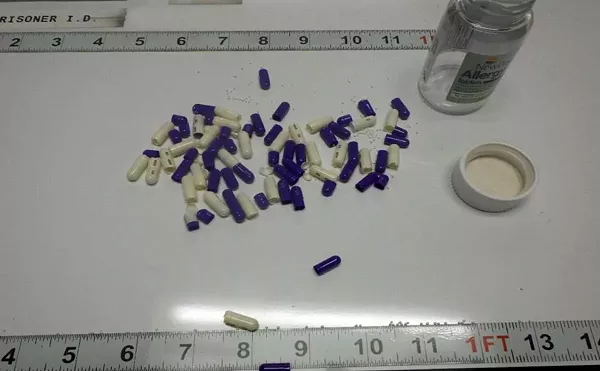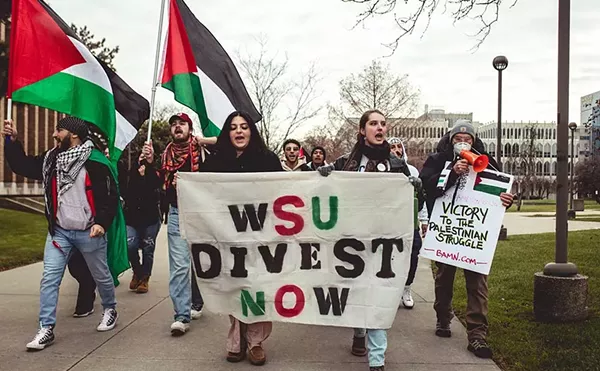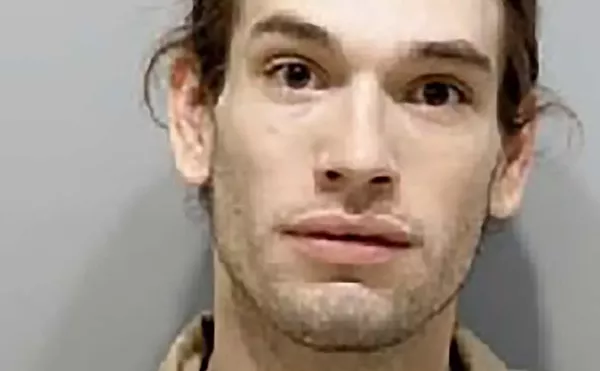Every day in Detroit two or three people, on average, file a complaint with the Board of Police Commissioners, an independent committee of civilians and police officers that monitors the city’s police department. While most complaints allege only verbal abuse or improper procedure, about 12 percent – around 110 a year – are complaints of excessive force or brutality.
It is not just a local issue. And it’s a problem that appears to be growing worse. Police brutality is on the rise across the nation, according to the American Civil Liberties Union, Human Rights Watch and several other watchdog organizations. These groups blame the increase on a decade-long march within police departments toward an increasingly militaristic style of law enforcement. Only a few years ago specialized units such as combat-ready SWAT teams and highly aggressive plain-clothed street crimes units comprised only a small part of most city police departments. Today, at least partly in response to the increased firepower wielded by criminals, officers in a wide cross section of police work tote weapons of battlefield caliber and use increasingly combative tactics to enforce the law.
Between July 1995 and April 1997 Detroit paid nearly $20 million to settle civil suits brought against the police department for a variety of offenses, according to a City Council report presented by then-councilmember Mel Ravitz. Declaring in the report that abuse committed by police officers is "a serious problem for the City of Detroit," Ravitz urged City Council and the police department to develop a campaign to "reduce costs, prevent more violent episodes and save both police officers’ careers and citizens’ lives."
For victims of police brutality the effects can be permanently debilitating or even fatal. Yet only the most exceptional cases are transformed from private tragedy into the material of public discourse, and even those encounters are often dismissed as "isolated incidents." Such was the case with the 1992 killing of Malice Green, a petty drug offender who died en route to the hospital after being beaten by Detroit police officers.
But last February in New York City, a 23-year-old West African immigrant and street peddler named Amadou Diallo stood unarmed one evening in the vestibule of his Bronx apartment. After a brief exchange of words, the content of which may never be known, Diallo was killed by four white policemen who fired 41 bullets at him in less than two minutes. Nineteen rounds hit Diallo, who stood no more than 20 feet from the officers. "It has focused the attention of the nation on overly aggressive specialized police units," said John Crew, director of the ACLU Police Practices Program in Northern California and the organization’s national spokesman on the issue. "The Diallo killing was inevitable – the erosion of civil rights at the hands of the police units that are armed to the teeth and told they can do whatever it takes to reduce crime."
Quietly accepted
The four officers involved in the Diallo killing, all veterans with more than 27 years police experience among them, were members of an elite street crimes unit assembled to take drugs, guns and violent offenders off New York City streets. On the night Diallo was shot, the unit was looking for a serial rapist to whom Diallo was later described as a "rough match" by other officers working the case. The horror of the shooting set off a firestorm of rallies and protests in New York and other cities.
"Imagine what a shooting like that does to a community," said Crew. "Imagine what it’s like for children or the elderly to have the door to their home broken down by armed men in black masks pointing laser-guided weapons at them and screaming for them to ‘get down on the ground or die.’ It happens all the time."
Middle-class America seems to tacitly support this new and more heavily armed police profile, despite the growing number of constitutional violations it seems to invite, said Crew. Brutality and terror – especially when it’s aimed predominantly at the urban poor – seem a small price to pay for safer streets. Even members of the besieged communities sometimes accept rights violations in exchange for fewer crack houses and fewer street-corner shootings.
"There’s no question these problems exist here in Detroit — training and tactics that lead to bad seeds being more likely to use force or their weapons," said Michigan state Senator Joe Young, D-Detroit. Young, who sits on the Senate Appropriations Committee, said he has watched in recent years as requests for specialized training, more powerful weapons and more military-style equipment have risen among police departments throughout the state.
"In the late ’60s and early ’70s you had the Big Four in Detroit," said Young, referring to the notorious unit of police toughs that worked as enforcers with little supervision and little regard for rights. Public outrage over the tactics of the Big Four and several other operations, such as the aggressive STRESS program led, in large part, to the election of Mayor Coleman Young, he said. "Now we’ve got these new specialized units that seem to have the same potential for brutality."
The transformation of police forces in the nation’s cities began almost a decade ago in response to rising crime, more guns on the street and the near-epidemic spread of crack cocaine, according to James Allan Fox, dean of the College of Criminal Justice at Northeast University in Boston. The federal government, along with state and local law enforcement, declared a "war" on drugs and a "war" on crime. Billions of dollars have been funneled into the crusade, as has an assortment of decommissioned military equipment – grenade launchers, surveillance gear and urban assault vehicles – all with the implicit acknowledgment that a tougher kind of policing is the order of the day.
Siege mentality
"Where you have the rhetoric of war you will inevitably have the mentality of war," said Fox. "And when you have that mentality excesses are bound to occur."
In precinct after precinct officers are told they have been enlisted in special "operations" and drafted for bold new "offenses" in the so-called war, said Fox. Police now routinely frisk and arrest hundreds of thousands of men each year, mostly young and mostly black or Hispanic, based on little more than the color of their skin and the style of their clothing. Human Rights Watch estimates that fewer than 10 percent of those frisked or arrested have committed a crime. In many of the nation’s poorest and most crime-ridden communities the police are nothing less than an occupying force, said Fox.
Perhaps not surprisingly this siege-style police work was pioneered in New York. In the early ’90s Mayor Rudolph Guiliani hired Police Commissioner William Bratton to clean up New York’s streets. The flamboyant Bratton adopted a "zero tolerance" policy on crime. He reconfigured many precincts and devoted unprecedented resources to getting guns and drugs off the streets. SWAT-style tactical units, previously used only for highly volatile situations such as hostage standoffs and big drug deals, were now deployed in day-to-day police work. And the so-called street crimes units were created and allowed to operate with limited supervision.
Crime in New York has dropped in recent years, as it has in cities across the country including Detroit (though the prison population nationwide continues to grow at an alarming rate). Bratton, who is no longer with the police department, has been quoted of late as advocating a reassessment of some of the policies he introduced. He has also said that the New York Police Department clearly understood that the number of "negative encounters" between police and civilians would increase as a result of his aggressive strategies.
Detroit revamps
Yet in April of 1998, when current Detroit Police Chief Benny Napoleon was the department’s executive director, he announced a plan to adopt much of the Bratton strategy. Over the last year the DPD has reconfigured several of its precincts and combined its narcotics division and the special crimes section, known as the gang squad, to create a city-wide bureau. This has doubled the number of officers devoted to street crimes, said Commander Bryan Turnbull. Officers have also been given permission to use hollow-point ammunition, bullets with more "stopping power" resulting from the increased internal damage they do compared to more traditional bullets.
Though a bit slow in coming, the need for the reorganization is a response to the menace of the drug trade, said Turnbull. Only a few years ago serious drug trafficking in Detroit was confined almost exclusively to a couple neighborhoods, he said. But crack carried drugs and related violence into many of the city’s residential neighborhoods.
"The strategy makes us more effective," said Turnbull, who points to a 200 percent increase in arrests as testament to the success of the new units. "If you have a war you use resources so you can fight it – ‘war’ may not be a good word to use, though."
Turnbull said he cannot explain what led up to the Diallo shooting but points to the tremendous difficulty of police work. On the street there are unwritten rules by which both the criminals and the police operate, he said. When those rules break down, tragedy results. And, when guns begin to fire, confusion and fear often sets in.
"You talk about brutality. I’m not justifying anything, but I’m talking about being aggressive, sometimes just to live," said Turnbull. "The courts can take months to decide whether a shooting was appropriate or not. An officer in the street may have only a split second."
It is this ability to make quick decisions under the most harrowing of circumstances that makes police training so important. It is also during training that young recruits are shaped into the kind of police officers they will become, said Dick Tillman, director of basic police training at the Oakland Police Academy. The academy is one of 18 facilities throughout Michigan that trains police officers, all according to standards mandated by the state.
"There is no substitute for experience," said Tillman. "But the training they get now will influence their ability to interpret and learn from that experience."
Community approach
Like police work itself, training has changed in recent years to reflect the more complex – and sometimes more violent – world many police officers today inhabit, said Tillman. Recruits now receive more weapons training, meaning more hours on the range, in simulation tests and more time with advanced weapons such as shotguns. More recruits are also receiving advanced tactical training through the Michigan State Police’s Tactical Training Division, he said.
But training is also moving in another direction. In addition to more weapons work, in recent years recruits also have been required to take several courses in civil rights and cultural diversity training aimed to prepare them for a new kind of police work that many hope will turn the trend away from the more aggressive model. Collectively known as community policing, these programs emphasize greater interaction between community leaders and local law enforcement. They encourage preventive programs and negotiation over force and piecemeal responses to crimes in progress.
Officer are once again being encouraged to walk a beat in their assigned neighborhoods, to attend community meetings and to offer less violent and more far-reaching solutions to neighborhood crime. Officers are being encouraged to invest in the communities in which they work, and communities are, in turn, being encouraged to invest in the police, said David Martin, research director for the Center For Urban Studies’ Urban Safety Program at Wayne State University.
"In Detroit it’s currently more of a symbolic move toward a willingness to be progressive," said Martin. "It’s about a deep-seated cultural change."
But experimental programs like the community policing program in Detroit often are the first to get the budget knife, said Martin, leaving the program’s future uncertain. In addition, police officers have traditionally been less interested in prevention than in fighting crime directly, he said.
Whether it is called community policing or not, the success or failure of a department depends on its relationship with the community, said Sen. Young. Residency requirements, cultural sensitivity training and increased police accountability are essential to improving police work in Detroit, he said.
"We have a community living in fear," he said. "Nobody is saying police officers should be social workers, but they should be seen by the community as a friendly force, not an occupying force."






